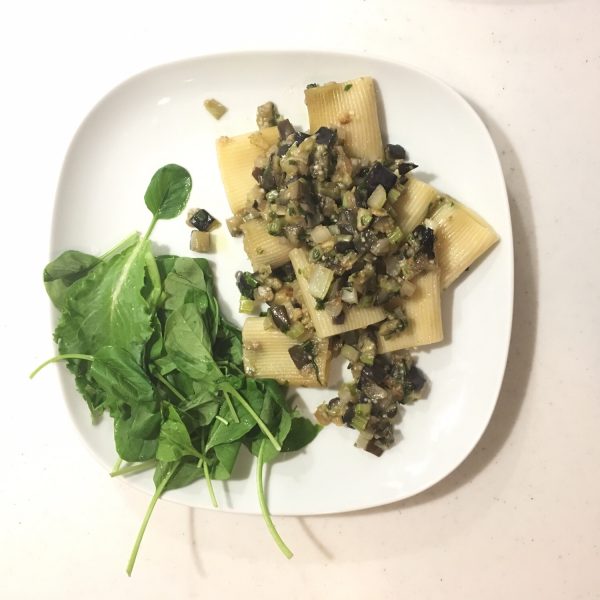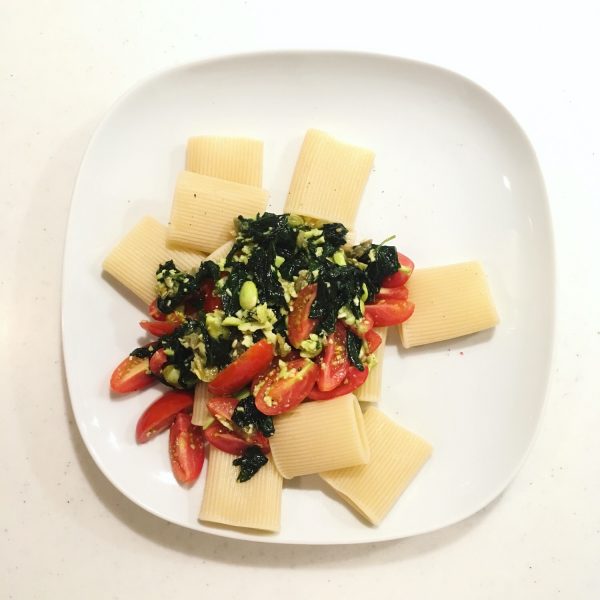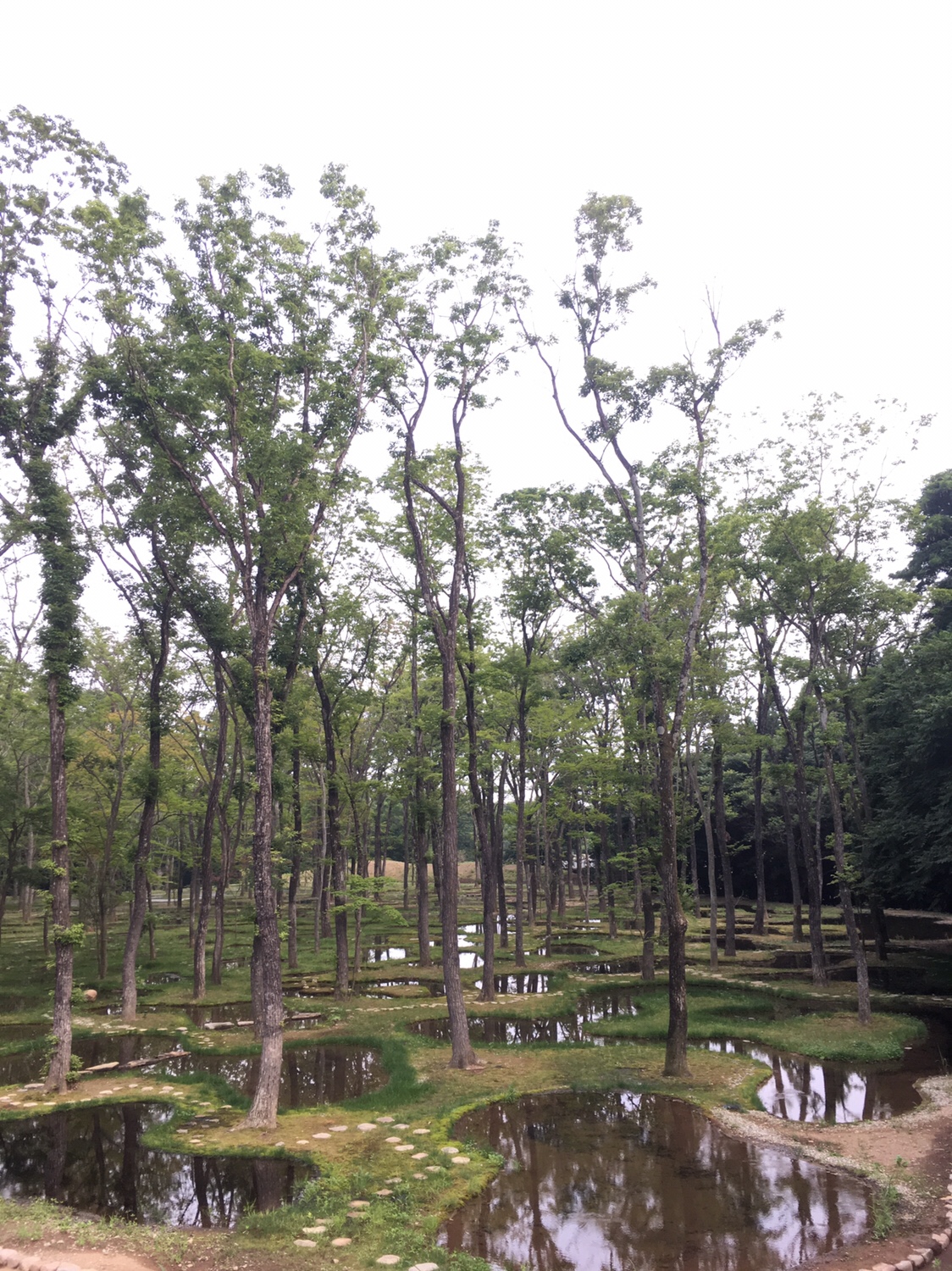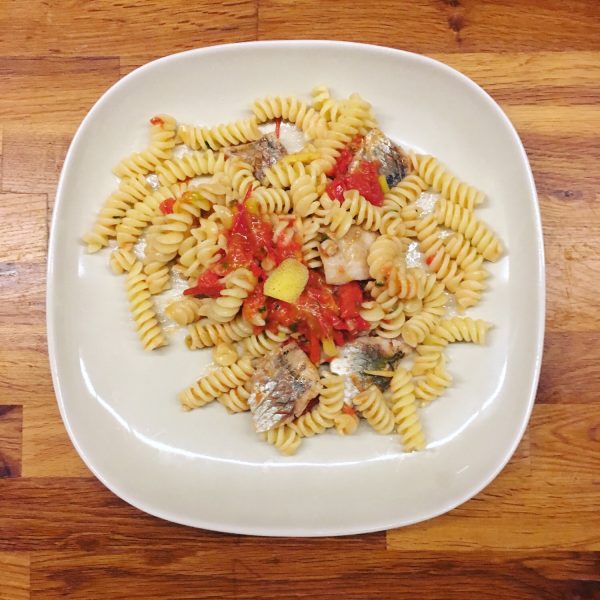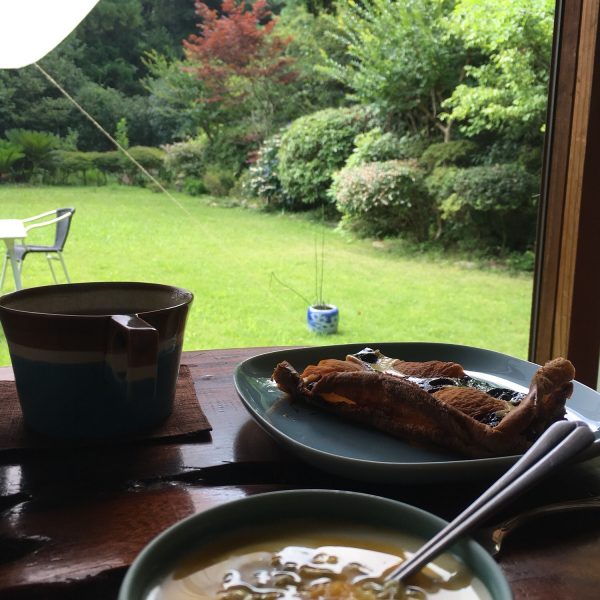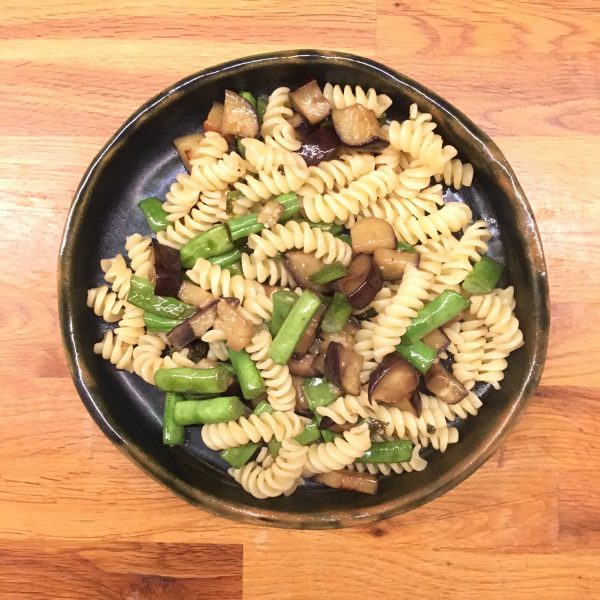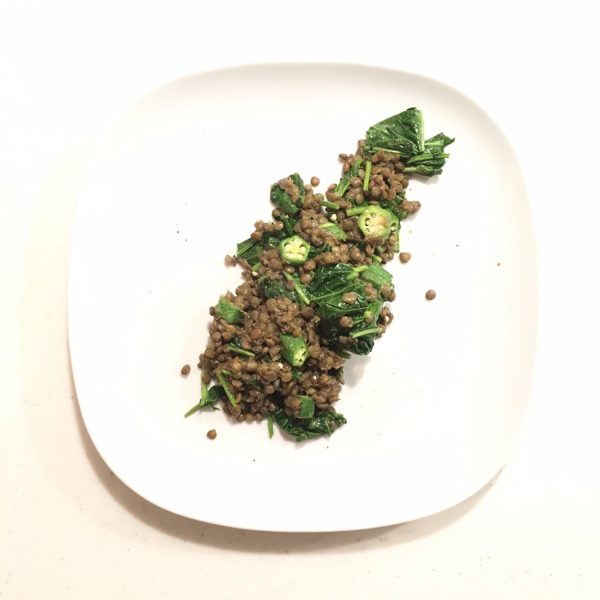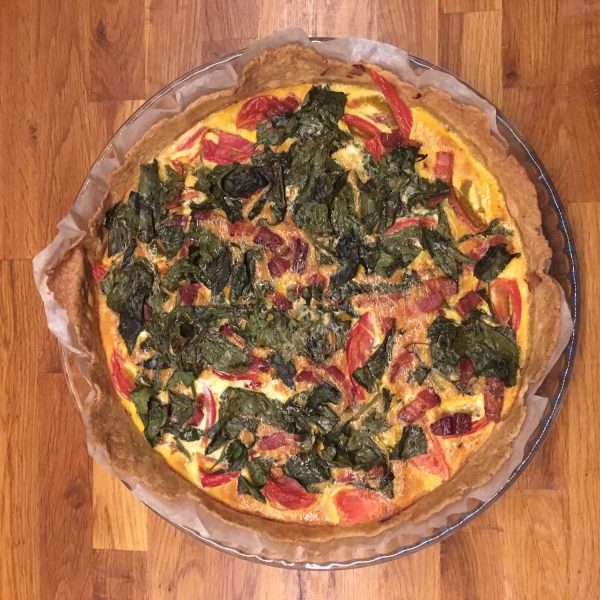When you are super pleased to invent a new recipe that looks like delicious… and talk about it over the phone with your mom and she tells you that your brilliant idea not only already exists but is actually a classic Sicilian recipe!!! I must have Italian blood at some point!!!!
Anyway, this brilliant and delicious summer recipe is caponata! Serve with giant pasta and a bit of salad on the side. Here is my recipe.
Caponata (for 2 people)
– 3 Japanese eggplants
– 1 branch of celery
– 1tsp of capers
– olive oil
– 1tsp of vinegar
Dice in small cubes the eggplants. In a pan heated with olive oil cooked them at medium to high heat until golden. Stir often. Wash and dice the celery, up to the leaves. Add to the eggplants. Cook for 5-10 min at medium heat. Add the capers, and finish with the vinegar. Eat like that or with pasta as presented in the picture. Also good with grated Parmigiano.
